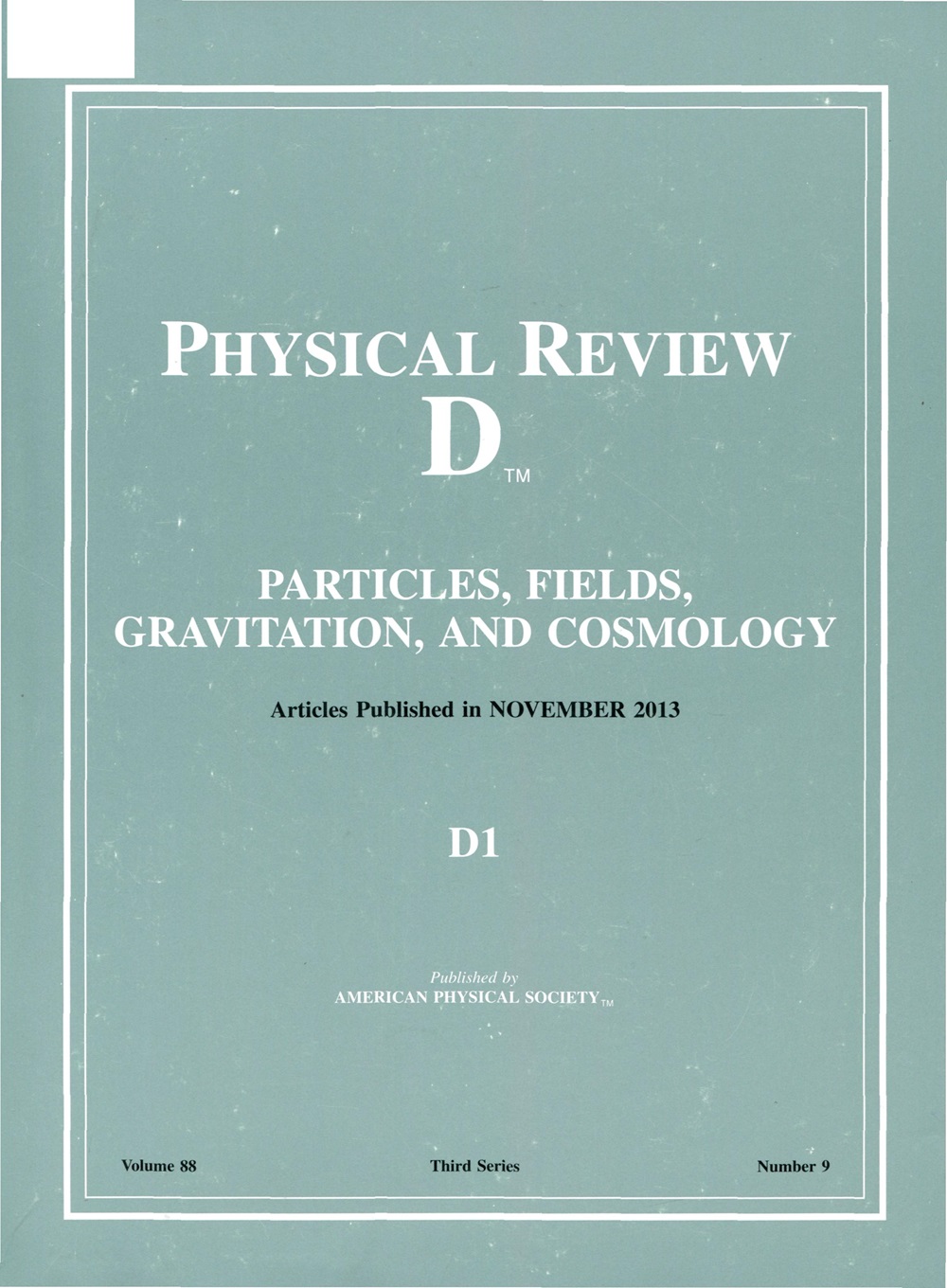通过第一代轻夸克产生右手中微子
IF 5
2区 物理与天体物理
Q1 Physics and Astronomy
引用次数: 0
摘要
轻夸克(LQs)和右手中微子(RHNs)的对撞机现象学在文献中得到了广泛的研究。由于它们的规范单重态性质,在大型强子对撞机中rhn的产生通常受到微小的轻重中微子混合角的抑制。在本研究中,我们探索了一个有希望的场景,即LQ介质的存在显著增强了RHN的产生:LQ基本上只与第一代费米子(夸克和轻子,包括RHN)耦合,并且与第一代RHN的耦合占主导地位。我们考虑了所有可能导致这种情况的标量和矢量LQs。由于第一代夸克的部分分布函数(pdf)增强,第一代夸克的前景比其他几代更好。增强的pdf提高了lq的生产截面,特别是它们的单一和间接生产。结合产生一对RHN的lq的所有生产模式,我们通过分析RHN对衰变产生的单电子和双电子通道来估计发现前景。我们发现lq的间接产生对于确定HL-LHC第一代场景的发现范围至关重要。2025年由美国物理学会出版本文章由计算机程序翻译,如有差异,请以英文原文为准。
Right-handed neutrino production through first-generation leptoquarks
The collider phenomenology of leptoquarks (LQs) and right-handed neutrinos (RHNs) has been studied extensively in the literature. Due to their gauge singlet nature, the production of RHNs at the LHC is typically suppressed by the tiny light-heavy neutrino mixing angles. In this study, we explore a promising scenario where the presence of a LQ mediator significantly enhances the RHN production: the LQ essentially couples only to first-generation fermions (quarks and leptons, including the RHN), and the coupling with the first-generation RHN dominates. We consider all possible scalar and vector LQs that could lead to such a scenario. The prospects are better for the first-generation scenario than the other generations because of the enhanced parton distribution functions (PDFs) of first-generation quarks. The enhanced PDFs boost the production cross sections of LQs, particularly their single and indirect productions. Incorporating all production modes of LQs that result in a pair of RHNs, we estimate the discovery prospects by analyzing the monoelectron and dielectron channels arising from the decay of the RHN pair. We find that the indirect production of LQs is crucial in determining the discovery reach at the HL-LHC for the first-generation scenario. Published by the American Physical Society 2025
求助全文
通过发布文献求助,成功后即可免费获取论文全文。
去求助
来源期刊

Physical Review D
物理-天文与天体物理
CiteScore
9.20
自引率
36.00%
发文量
0
审稿时长
2 months
期刊介绍:
Physical Review D (PRD) is a leading journal in elementary particle physics, field theory, gravitation, and cosmology and is one of the top-cited journals in high-energy physics.
PRD covers experimental and theoretical results in all aspects of particle physics, field theory, gravitation and cosmology, including:
Particle physics experiments,
Electroweak interactions,
Strong interactions,
Lattice field theories, lattice QCD,
Beyond the standard model physics,
Phenomenological aspects of field theory, general methods,
Gravity, cosmology, cosmic rays,
Astrophysics and astroparticle physics,
General relativity,
Formal aspects of field theory, field theory in curved space,
String theory, quantum gravity, gauge/gravity duality.
 求助内容:
求助内容: 应助结果提醒方式:
应助结果提醒方式:


